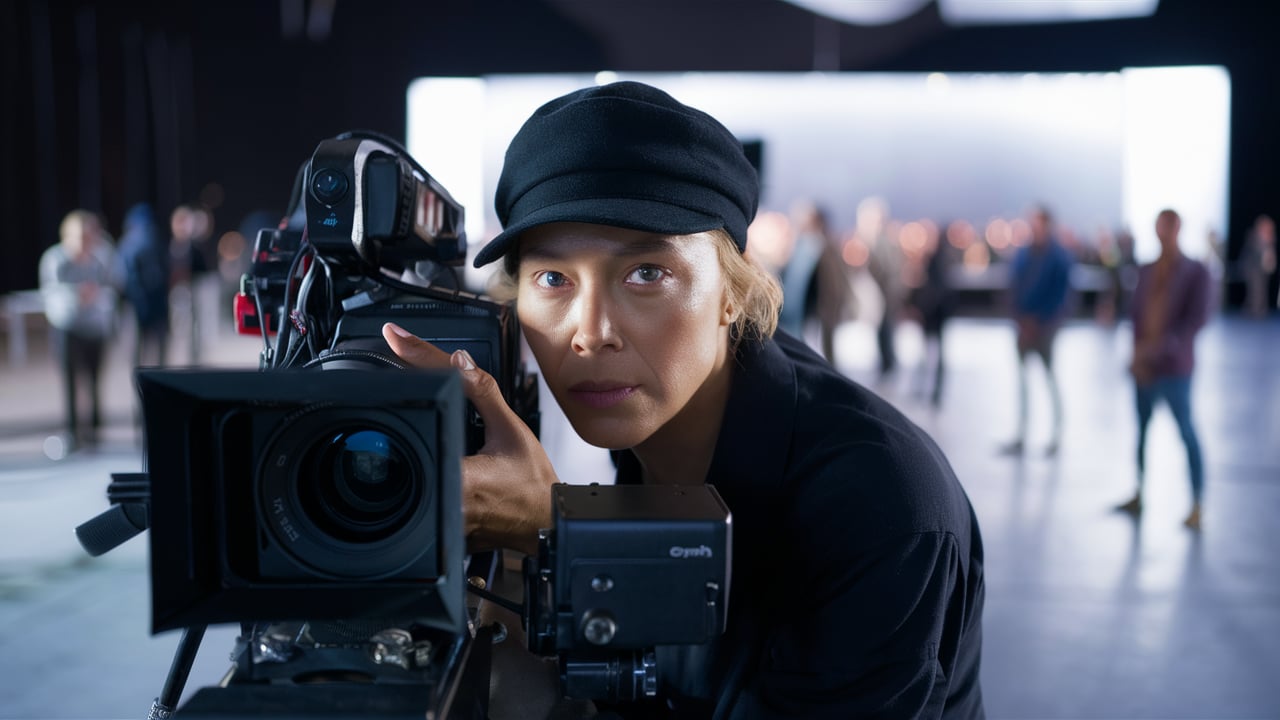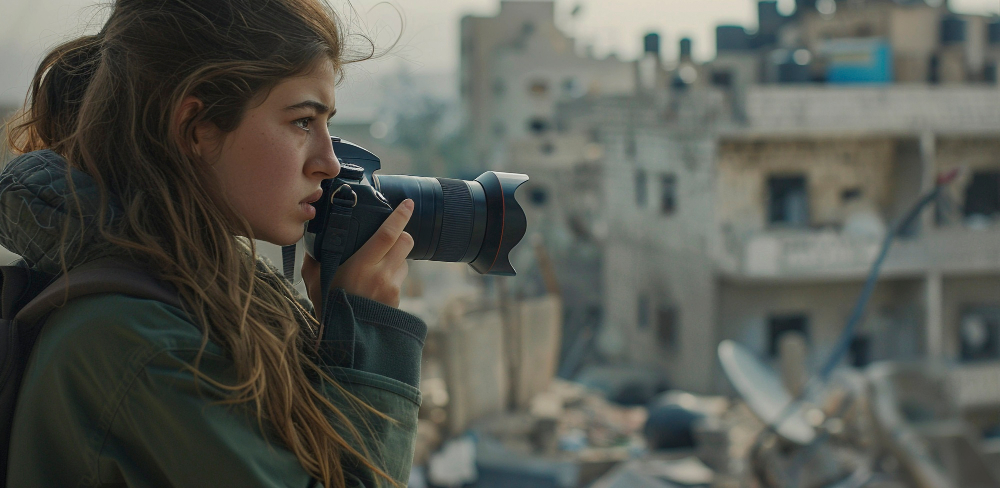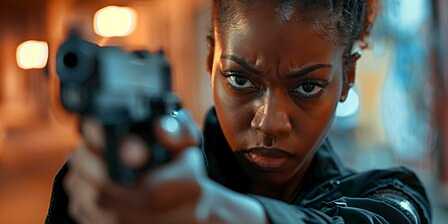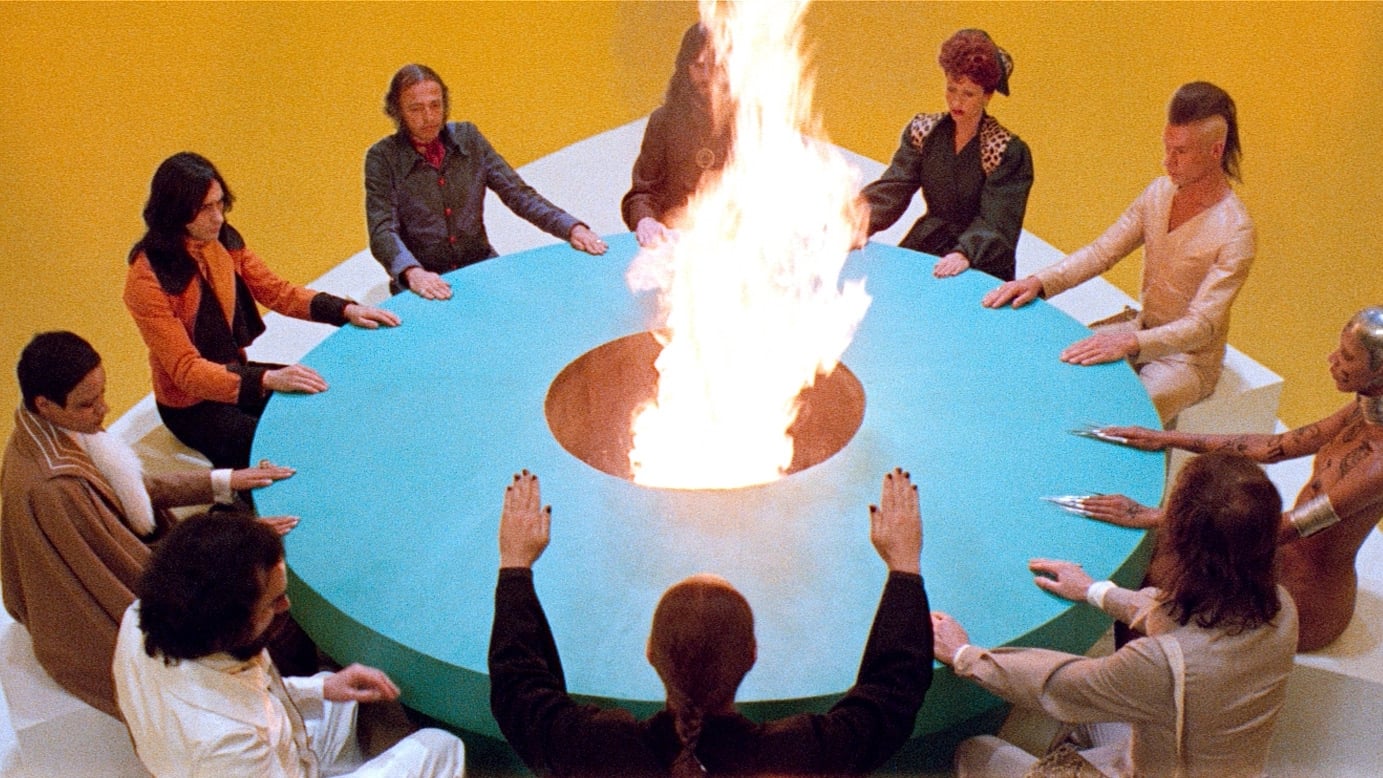Close-up shots are used to create a sense of intimacy, focus on details, and convey emotions. Here are some situations where close-up shots are particularly effective:
- Emotional Expression: To capture and emphasize facial expressions and emotions, close-up shots can highlight subtle changes in a person’s face, making the audience feel more connected to the character.
- Detail Focus: When specific details are important, such as an object, a part of a scene, or an action, close-up shots can draw the viewer’s attention to these elements.
- Dramatic Effect: Close-up shots can heighten tension or drama in a scene. By focusing closely on a subject, you can create a sense of urgency or importance.
- Character Identification: Close-ups help the audience form a stronger connection with characters by allowing them to see the characters’ faces clearly and understand their thoughts and feelings.
- Revealing Information: When you want to reveal something crucial to the plot or story, a close-up can ensure the audience doesn’t miss it.
- Intensifying a Scene: In action or suspenseful scenes, close-ups can intensify the mood by limiting the viewer’s field of vision, making them feel more immersed and anxious.
- Artistic Composition: Close-up shots can be used to create visually striking and artistic compositions, focusing on patterns, textures, or other visually appealing aspects.
- Highlighting Reactions: To show how a character reacts to a particular situation or dialogue, close-ups can capture the immediate response, adding depth to the storytelling.
Close-up shots should be used thoughtfully to enhance the storytelling, ensuring they serve a clear purpose within the context of the scene or narrative.
In the enchanting realm of visual storytelling, where every frame paints a tale with hues of emotion and light, there exists a powerful tool that whispers narratives in whispers rather than roars—the close-up shot.
Just as a painter delicately embellishes a canvas with intricate brushstrokes, filmmakers and photographers weave stories through the artistry of magnifying moments to unveil secrets tucked away in the soul of their subjects.
These close-up shots, like whispered confessions shared solely between protagonist and viewer, hold the key to unlocking profound connections that transcend mere visuals.
Venturing beyond the surface, we embark on an odyssey through the minutiae—peering into the unspoken symphonies etched in furrowed brows, tear-streaked cheeks, and trembling lips. Here lies the magic of close-ups: in their ability to render vulnerability palpable, to distill raw emotions into crystalline drops that quiver on the edge of understanding.
It is within these intimate frames that emotions surge forth with unbridled intensity, forging bonds between viewer and character so strong they resonate long after the screen fades to black.
With each gentle caress of a lens focused closely on its subject, we are lured into a dance of empathy where words become obsolete, and silent echoes beckon us closer to unravel truths too profound for casual glances to discern.
The Impact of Close-Up Shots.
Close-up shots wield a powerful allure, drawing viewers into the intricate tapestry of visual narratives. They serve as bridges between the subject and audience, crafting an intimate connection that transcends mere observation.
As the lens delves deeper into the minutiae of a scene, emotions become palpable, vulnerabilities laid bare, and complexities unravel with an arresting intensity. Think of a single tear trickling down an actor’s cheek or the quiver of lips on the verge of uttering profound truths; these subtle nuances exude a rawness that lingers long after the screen fades to black.
Within the canvas of storytelling, close-ups function as delicate brushstrokes that uncover hidden treasures often overlooked in wider frames. A fleeting glance captured up close, a concealed scar that whispers volumes about untold histories, or the glisten in eyes reflecting unspoken desires—these details enrich narratives with layers of meaning waiting to be unraveled by discerning eyes.

By magnifying such subtleties, filmmakers invite audiences on an immersive journey where every frame conceals secrets waiting to be deciphered.
The impact of close-up shots extends beyond visual aesthetics; it delves deep into the realm of psychological engagement. Immersed in a sea of pixels, viewers are invited not just to witness but to feel—to empathize with characters’ joys and pains, fears and hopes.
The proximity granted by close-ups fosters a sense of shared experience, forging emotional bonds that transcend the boundaries between reel and real life. It is through this communion that stories cease to remain distant spectacles but unfurl as vivid experiences etched upon hearts and minds—one frame at a time.
Enhancing Emotional Depth Through Close-Ups.
In the realm of visual storytelling, the close-up shot acts as a powerful conduit for emotion, bridging the gap between characters and audiences with raw intensity. When a camera zooms in on an actor’s tear-streaked face or clenched fists, every nuance becomes magnified, drawing viewers into a world where empathy thrives.
These tight frames capture not just expressions but unspoken truths hidden beneath facades, resonating with viewers on a visceral level. By immersing themselves in such close-ups, audiences are invited to feel deeply, forging connections that transcend mere observation.
Close-up shots excel in conveying subtle shifts in mood or profound character transformations that might otherwise escape notice amidst wider scenes. Imagine a silent film where the protagonist’s eyes tell a tale of love lost without uttering a single word, their gaze echoing through the screen with poignant clarity.
Such intimate cinematography heightens emotional resonance, evoking responses that linger long after the scene fades to black. Whether it’s a smile tinged with melancholy or eyes brimming with unshed tears, these close-ups serve as windows into the soul of a story, enriching narratives with layers of complexity and depth.
Vulnerability and authenticity find their voice through close-up shots, offering glimpses into the core of human experiences. In moments of exposed fragility or unwavering resolve captured up close, characters reveal their innermost selves to viewers who witness their journey unfold inch by captivating inch.
The authenticity portrayed through these intimate frames establishes an emotional kinship between characters and audience members—a shared understanding rooted in genuine portrayals that resonate universally. By embracing vulnerability within close-ups, storytellers weave intricate tapestries of emotion that bind hearts across screens and souls across distances.
Crafting Visual Narratives with Close-Ups.
In the realm of visual storytelling, close-up shots serve as powerful tools for crafting intricate and resonant narratives. One captivating aspect lies in the ability to establish visual motifs through the strategic deployment of recurring close-ups that symbolize underlying themes or character arcs.
Consider a film where a distinctive necklace worn by various characters is showcased through close-up shots at pivotal moments. This can subtly convey themes of interconnectedness or inheritance, imbuing the narrative with layers of meaning that resonate beyond mere visuals.
Furthermore, close-up shots offer a canvas for conveying subtext and hidden emotions within a scene. By zooming in on subtle gestures, expressions, or objects, filmmakers can intricately weave emotional depth into their stories.

For instance, a tear rolling down a character’s cheek captured in extreme close-up may signify unspoken grief or inner turmoil, engaging viewers on a more visceral level. These nuanced details enhance audience immersion and invite interpretation beyond surface narratives.
Moreover, the integration of close-ups not only amplifies cinematic impact but also strengthens the overall language of storytelling. By strategically choosing when to employ these shots, filmmakers can underscore pivotal moments or thematic elements effectively.
Imagine a sequence where fleeting glimpses of hands nervously twisting an object in tight close-ups accentuate mounting tension before a critical revelation. Such deliberate use of close-ups elevates storytelling by heightening viewer engagement and enriching the visual tapestry of the narrative.
The Art of Subtlety in Close-Up Shots: Capturing the Unseen Symphony.
In the realm of visual storytelling, the power of close-up shots lies not just in what they reveal but also in what they conceal. It’s within these subtle movements and whispered frames that narratives come alive with a quiet intensity, inviting viewers to lean closer and unravel hidden layers.
Imagine a scene where a character’s gaze shifts imperceptibly, signaling an internal realization without uttering a word. These nuanced gestures, captured through delicate focus adjustments, add depth and richness to the story canvas while leaving room for imagination to dance between clarity and mystery.
Striking the delicate balance between clarity and ambiguity in close-up shots is akin to conducting a symphony of emotions. Consider how a gentle glint in the eye can speak volumes about unspoken desires or inner turmoil, drawing audiences into a world where silence resounds louder than words.
By intentionally blurring certain details while sharpening others within the frame, filmmakers can evoke a sense of intrigue that beckons viewers to participate actively in deciphering visual clues.
This intentional play with perception fuels curiosity and encourages nuanced interpretations, transforming passive viewing into an interactive experience that lingers long after the screen fades to black.
Furthermore, close-ups serve as powerful tools for building suspense and tension within pivotal moments of a narrative. Picture a climactic scene where every breath is held captive by the strategic framing choices that heighten anticipation and unease.
Through selective focus on elements like quivering hands or fleeting expressions, filmmakers weave an intricate web of emotional threads that keep audiences teetering on the edge of their seats.
The artful manipulation of framing not only amplifies emotional impact but also underscores the significance of each beat in the storytelling rhythm, ensuring that even the smallest twitch speaks volumes about what remains unsaid. In these moments of tension sculpted through thoughtful close-ups, silence becomes pregnant with unspoken truths waiting to unfurl at just the right moment.
Close-Ups as Character Studies.
In the realm of visual storytelling, close-up shots serve as portals into the intricate tapestries of characters’ inner worlds. Through the exploration of detailed facial expressions captured in these intimate frames, storytellers can unravel a character’s deepest emotions, motivations, and conflicts.
Imagine the quiver of a lip, the furrow of a brow, or the flicker of an eye—all captured in extreme close-ups that lay bare the raw essence of a character’s psyche. These nuanced details not only provide insight into their current state but also hint at past traumas or future desires without uttering a single word.
Employing extreme close-ups goes beyond showcasing traditional physical features; it delves into the subtleties that mirror deeper aspects of a character’s personality.
Consider a scar on a cheek, a tattoo on a wrist, or even the way one nervously fidgets with jewelry—the minutiae that narrate volumes about who they are beneath the surface masks they wear for the world.

By zooming in to these tiny yet significant elements, filmmakers can offer audiences profound revelations about their protagonists or antagonists that might otherwise remain shrouded in mystery.
When these intense close-ups adopt an eye-level perspective with characters, an immediate connection is forged between viewer and subject. By meeting characters eye-to-eye—quite literally—a sense of empathy is established that transcends mere observation.
As tears well up in their eyes or laughter lines crinkle at the corners, viewers find themselves walking alongside these fictional personas on their tumultuous emotional journey.
The use of eye-level perspective in close-ups becomes a bridge between worlds, allowing audiences to step into shoes they never knew they wanted to fill and experience narratives from within hearts laid bare before them.
Setting the Tone: Lighting and Composition in Close-Ups.
In the realm of visual storytelling, lighting and composition wield a profound influence on the mood and atmosphere conveyed through close-up shots. Just as a painter deftly chooses colors to evoke emotions, filmmakers and photographers use lighting techniques to sculpt narratives within confined frames.
A gentle play of light caressing the contours of a subject’s face can evoke tenderness or nostalgia, while stark shadows cast across intense expressions can heighten drama and suspense. Through carefully orchestrated lighting setups, creators infuse their close-ups with subtle nuances that speak volumes without uttering a word.
Furthermore, compositional elements like framing, depth of field, and angles serve as essential tools in crafting impactful close-up scenes. Consider a tight shot framed so closely around an actor’s eyes that every flicker of emotion is magnified; this intentional framing not only intensifies the viewer’s connection with the character but also underscores the significance of what lies beneath those gaze-filled depths.
By judiciously playing with shallow depth of field, creators draw attention to key focal points within a scene, guiding viewers’ eyes to where emotions unfurl most vividly – be it a tear trickling down a cheek or a smile tinged with melancholy.
Moreover, strategic utilization of light and shadow play within close-up compositions can imbue visual stories with layers of meaning and symbolism. Imagine an intimate moment captured in silhouette against a softly lit background – here, darkness amplifies the vulnerability or secrecy between characters while light symbolizes hope or revelation.
The dance between light and shadow within tight frames allows storytellers to create visual poetry that resonates long after the screen fades to black. Through adept manipulation of these elements, close-up shots transcend mere visuals; they become intricate tapestries woven with threads of emotion, subtext, and unspoken truths.
As creators harness the interplay between lighting choices and compositional techniques in their close-ups, they unlock new dimensions where storytelling transcends dialogue and action.
The artistry lies not just in capturing moments up close but in infusing them with an ineffable quality that lingers in viewers’ hearts and minds – a testament to the power held within each meticulously crafted beam of light and precisely framed angle.
Beyond mere aesthetics, lighting and composition in close-ups become conduits for emotional resonance, inviting audiences into worlds where every flicker of illumination leads to profound revelations hidden beneath surfaces both seen and unseen.
Unveiling the Tapestry of Stories Through the Lens.
As we navigate the intricacies of visual storytelling, close-up shots emerge as potent tools capable of weaving narratives that resonate deeply with audiences around the world. These intimate frames hold within them emotions, untold stories, and unspoken truths that grip viewers and invite them to delve into the essence of characters and moments captured in exquisite detail.
Just like a painter meticulously adds strokes to a canvas or a composer carefully constructs notes into a symphony, filmmakers and photographers use close-ups to paint pictures with emotions, inviting us into the very souls of their subjects.
Through the lens of a camera, we uncover worlds within worlds – hidden beneath smiles, lurking behind tears, shimmering in the light refracted through eyes. Each close-up shot tells a story: sometimes whispered softly like a secret shared between kindred spirits; at other times roaring loudly like thunder echoing through valleys.
These frames not only capture images but distill truths, laying bare vulnerabilities, strengths, fears, and hopes in each fleeting expression. They serve as windows into the hearts of characters embarking on journeys illuminated by glimpses caught in the frame.
In this tapestry of storytelling magic woven through close-ups, we discover not just faces but legacies etched in pixels and film emulsions – immortalized for eternity to speak volumes without uttering a single word.

I am a highly experienced film and media person who has a great deal to offer to like-minded individuals. Currently working on several exciting projects, I am a film and media practitioner for over a decade. I have achieved a great deal of success in my professional career.





